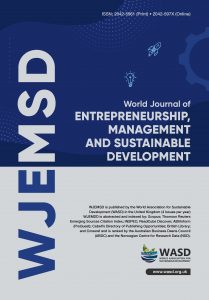Strategy to reduce the trade balance deficit for Red Meat in the Kingdom of Saudi Arabia, Prof. Adel Ghanem, Prof. Khalid Alrwis, Prof. Othman Al-Nashwan, Prof. Abdul Aziz Al-Duwais, Dr Sharafaldin Alaagib, Nageeb Aldawdahi and Said Azali Ahamada
 Professor Adel M. Ghanem
Professor Adel M. Ghanem
Office of Food Security Studies and Research
Vice Presidency for Graduate Studies and Scientific Research
King Saud University
Email: aghanem@ksu.edu.sa
Professor Khalid N. Alrwis
Office of Food Security Studies and Research
Vice Presidency for Graduate Studies and Scientific Research
King Saud University
Email: knahar@ksu.edu.sa
Professor Othman S. Al-Nashwan
Office of Food Security Studies and Research
Vice Presidency for Graduate Studies and Scientific Research
King Saud University
Email: onashwan@ksu.edu.sa
Professor Abdul Aziz M. Al-Duwais
Office of Food Security Studies and Research
Vice Presidency for Graduate Studies and Scientific Research
King Saud University
Email: dr.duwais@hotmail.com
Dr Sharafaldin B. Alaagib
Office of Food Security Studies and Research, Vice Presidency for Graduate Studies and Scientific Research
King Saud University
Email: sharaf.bakri@gmail.com
Nageeb M. Aldawdahi
Office of Food Security Studies and Research, Vice Presidency
for Graduate Studies and Scientific Research, King Saud University
Email: nageeb2001@gmail.com
Said Azali Ahamada
Office of Food Security Studies and Research, Vice Presidency for Graduate Studies and Scientific Research
King Saud University
Email: said@wasd.org.uk
Paper type: Research Paper
Received: 16 March 2023 / Revised: 18 July 2023 / Accepted: 18 July 2023 / Published: 15 April 2024
DOI: 10.47556/J.WJEMSD.20.1.2024.3
Objectives: As the trade balance deficit for red meat continues to increase in Saudi Arabia, this study aims to develop a strategy to reduce it based on published data and quantitative economic analysis.
Methodology: This study relies on quantitative economic analysis represented by the coefficient of geographical concentration, measured by several indicators, the most important of which is the Hirschman index. In addition, linear programming is used to maximise the value of exports and minimise the value of imports of red meat.
Results: This research shows that the value of imports exceeds that of Saudi exports of red meat, leading to an increase in the trade balance deficit at an annual growth rate of 7.4% during the period 2000-2021. The total amount of red meat exports to nine countries (UAE, India, Bahrain, Yemen, Bangladesh, Egypt, Jordan, Oman, and Djibouti) reached 85.94%, while the total amount of red meat imports from seven countries (Brazil, India, Australia, New Zealand, Pakistan, Ethiopia, and Sudan) reached 92.91% during the period 2017-2021. By maximising the value of exports and minimising Saudi import value of red meat, the same amount of red meat can be exported and imported. This is in addition to reducing the trade balance deficit for red meat from US$653.76m to US$597.52m, a reduction in the deficit of 8.60%. In light of these results, it is recommended that the geographical distribution of both Saudi exports and imports are restructured so that the trade balance deficit for red meat can be reduced.
Keywords: Exports and Imports; Red Meat; Linear Programming; Saudi Arabia.
Citation: Ghanem, A.M., Alrwis, K.N., Al-Nashwan, O.S., Al-Duwais, A.A.M., Alaagib, S.B., Aldawdahi, N.M., Ahamada, S.A. (2024): Strategy to Reduce the Trade Balance Deficit for Red Meat in the Kingdom of Saudi Arabia. World Journal of Entrepreneurship, Management and Sustainable Development, Vol. 20, No. 1, pp. 31–55.

